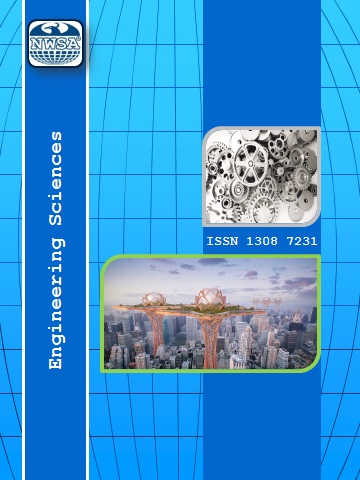References
[1] Filipe, C.D., Daigger G.T., Grady C.P.L Jr., (2001). Effects of pH on the rates of aerobic metabolism of phosphate-accumulating and glycogen-accumulating organisms, Water Environment Research, 73, pp:213-222
[2] Filipe, C.D., Daigger, G.T., and Grady, C.P.L.Jr., (2001). pH as a key factor in the competition between glycogen-accumulating organisms and phosphorus-accumulating organisms, Water Environment Research, 73, pp:223-232.
[3] Lemos, P.C., Viana, C., Salgueiro, E.N., Ramos, A.M., Crespo, J.P.S.G. and Reis, M.A.M., (1998). Effect of carbon source on the formation of polyhydroxyalkanoates (PHA) by a phosphate accumulating mixed culture, Enzyme and Microbial Technology, 22, pp:662-671.
[4] Mamais, D. and Jenkins, D., (1992). The effects of MCRT and temperature on enhanced biological phosphorus removal, Water Science and Technology, 26, pp:955-965.
[5] Brdjanovic, D., van Loosdrecht, M.C.M., Hoojmans, C.M., Alaerts, G.J., and Heijnen, J.J., (1997). Temperature effects on physiology of biological phosphorus removal. Journal of Environmental Engineering, 123, pp:144-153.
[6] Brdjanovic, D., Slamet, A., van Loodsdrecht, M.C.M., Hooijmans, C.M., Alaerts, G.J., and Heijnen, J.J., (1998). Influence of temperature on BPR: Process and molecular ecological studies, Water Research, 32, pp:1035-1048.
[7] Cech, J.S. and Hartman, P., (1990). Glucose induced breakdown of enhanced biological phosphate removal, Environmental Technology, 11, pp:651-656.
[8] Cech, J.S. and Hartman, P., (1993). Competition between polyphosphate and polysaccharide accumulating bacteria in enhanced biological phosphate removal systems, Water Research, 27, pp:1219-1225.
[9] Satoh, H., Mino, T., and Matsuo, T., (1994). Deterioration of enhanced biological phosphorus by the domination of micro-organisms without polyphosphate accumulation, Water Science and Technology, 30, pp:203-211.
[10] Metcalf and Eddy, (1991). Wastewater engineering: treatment, disposal and reuse. McGraw-Hill, New York.
[11] Jones, P.H., Tadwalkar, A.D., and Hsu, C.L., (1987). Enhanced uptake of phosphorus by activated sludge-effect of substrate addition. Water Research, 21, pp:301-308.
[12] Yeoman, S., Hunter, M., Stephenson, T., Lester, J.N., and Perry, R., (1988). The removal of phosphorus during wastewater treatment, Environmental Pollution, 49, pp:183-233.
[13] McClintock S.A., Randall, C.W. and Pattarkine, V.M., (1993). Effects of temperature and mean cell residence time on biological nutrient removal processes, Water Environment Research, 65, pp:110-118.
[14] Converti, A., Rovatti, M., and Del Borghi, M., (1995). Biological removal of phosphorus from wastewater by alternating aerobic and anaerobic conditions. Water Research, 29, pp:263-269.
[15] Sell, R.L., Krichten, D.J., Noichl, O.J., and Hartzog, D.G., (1981). Low temperature biological phosphorus removal. Proc., 54th Water Pollution Control Federation Conferation, Detroit.
[16] Kang, S.J., Horvatin, P.J., and Brisco, L., (1985). Full-scale biological phosphorus removal using A/O process in a cold climate. Proc. Int. Conf. Mgmt. Strategies for Phosphorus in the Environment, Selper Ltd, U.K., 72-77.
[17] Barnard, J.L., Stevens, G.M., and Leslie, P.J., (1985). Design strategies for nutrient removal plant. Water Science and Technology, 17, 233-242.
[18] Viconneau, J.C., Hascoet, M.C., and Florentz, M., (1985). The first application of biological phosphorus removal in France. Proc. Int. Conf. Mgmt. Strategies for Phosphorus in the Environment, Selper Ltd, U.K., 47-53.
[19] Florentz, M., Caille, D., Bourdon, F., And Sibony, J., (1987). Biological phosphorus removal in France. Water Science and Technology, 19, pp:1171-1173.
[20] Kern-Jespersen, J.P. and Henze, M., (1993). Biological phosphorus uptake under anoxic and aerobic conditions. Water Research, 27, pp:617-624.
[21] Kuba, T., Smolders, G.J.F., van Loosdrecht, M.C.M., and Heijnen, J.J., (1993). Biological phosphorus removal from wastewater by anaerobic anoxic sequencing batch reactor. Water Science and Technology, 27, pp:241-252.
[22] Ng, W.J., Ong, S.L., and Hu, J.Y., (2001). Denitrifying phosphorus removal by anaerobic/anoxic sequencing batch reactor. Water Science and Technology, 43, pp:139-146.
[23] Kuba, T., van Loosdrecht, M.C.M., and Heijnen, J.J., (1996). A Metabolic model for biological phosphorus removal by denitrifying organisms, Biotechnology and Bioengineering, 52, 685-695.
[24] Zeng, R., Yuan, Z., and Keller, J., (2003). Enrichment of denitrifying glycogen-accumulating organisms in anaerobic/anoxic activated sludge system, Biotechnology and Bioengineering, 81, pp:397-404.
[25] APHA, AWWA, WCPF., (1998). Standart Methods for the Examination of Water and Wastewater, 20th Edition, American Public Health Association, Washington, D.C.
[26] Whang L.M. and Park J.K., (2002). Competition between polyphosphate- and glycogen-accumulating organisms in biological phosphorus removal systems-effect of temperature, Water Science and Technology, 46, pp:191-194.
[27] Panswad, T., Doungchai, A., and Anotai, J., (2003). Temperature effect on microbial community of enhanced biological phosphorus removal system, Water Research, 37, pp:409-415.
 +90(535) 849 84 68
+90(535) 849 84 68 nwsa.akademi@hotmail.com
nwsa.akademi@hotmail.com Fırat Akademi Samsun-Türkiye
Fırat Akademi Samsun-Türkiye
